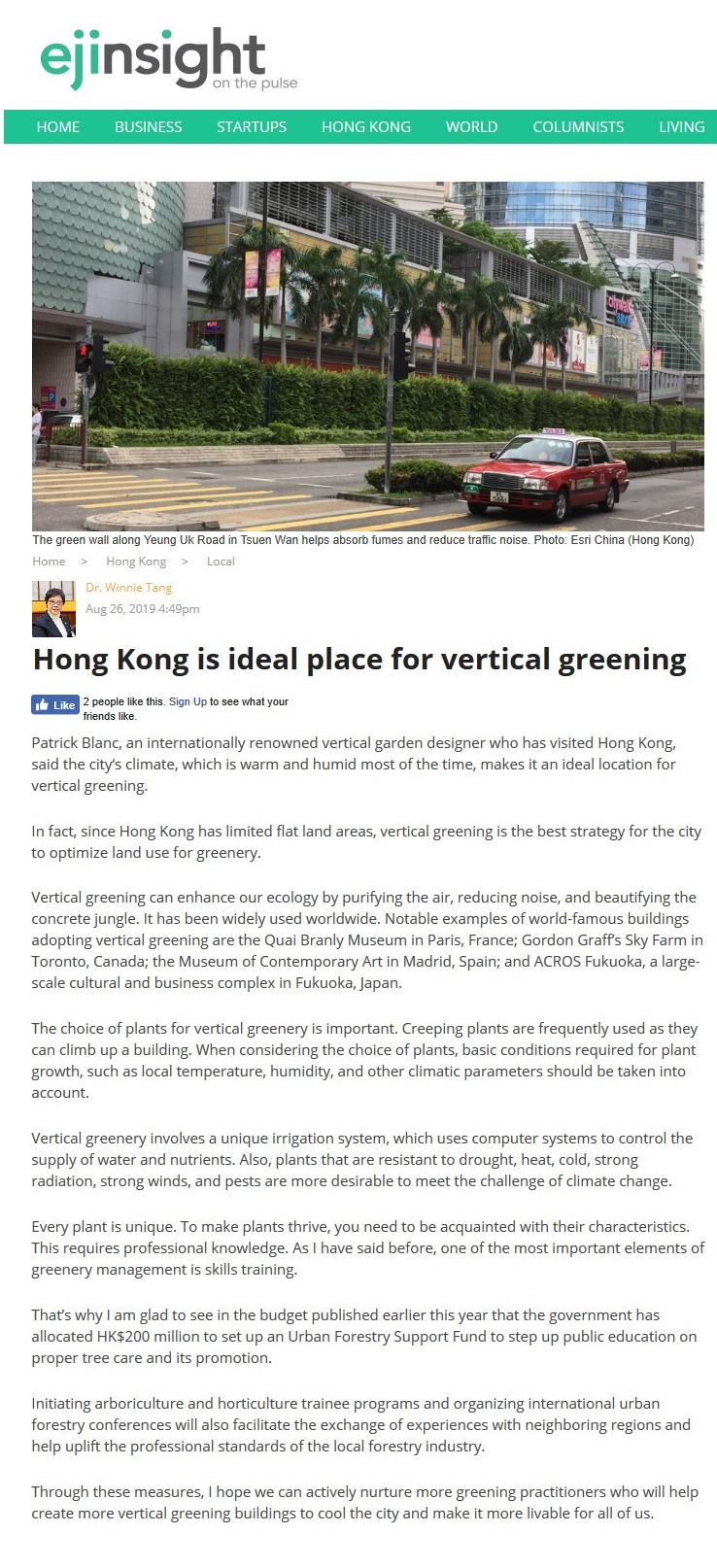網上版請按此

Hong Kong is ideal place for vertical greening
Patrick Blanc, an internationally renowned vertical garden designer who has visited Hong Kong, said the city's climate, which is warm and humid most of the time, makes it an ideal location for vertical greening.
In fact, since Hong Kong has limited flat land areas, vertical greening is the best strategy for the city to optimize land use for greenery.
Vertical greening can enhance our ecology by purifying the air, reducing noise, and beautifying the concrete jungle. It has been widely used worldwide. Notable examples of world-famous buildings adopting vertical greening are the Quai Branly Museum in Paris, France; Gordon Graff's Sky Farm in Toronto, Canada; the Museum of Contemporary Art in Madrid, Spain; and ACROS Fukuoka, a large-scale cultural and business complex in Fukuoka, Japan.
The choice of plants for vertical greenery is important. Creeping plants are frequently used as they can climb up a building. When considering the choice of plants, basic conditions required for plant growth, such as local temperature, humidity, and other climatic parameters should be taken into account.
Vertical greenery involves a unique irrigation system, which uses computer systems to control the supply of water and nutrients. Also, plants that are resistant to drought, heat, cold, strong radiation, strong winds, and pests are more desirable to meet the challenge of climate change.
Every plant is unique. To make plants thrive, you need to be acquainted with their characteristics. This requires professional knowledge. As I have said before, one of the most important elements of greenery management is skills training.
That's why I am glad to see in the budget published earlier this year that the government has allocated HK$200 million to set up an Urban Forestry Support Fund to step up public education on proper tree care and its promotion.
Initiating arboriculture and horticulture trainee programs and organizing international urban forestry conferences will also facilitate the exchange of experiences with neighboring regions and help uplift the professional standards of the local forestry industry.
Through these measures, I hope we can actively nurture more greening practitioners who will help create more vertical greening buildings to cool the city and make it more livable for all of us.
Dr. Winnie Tang
Adjunct Professor, Department of Computer Science, Faculty of Engineering and Faculty of Architecture, The University of Hong Kong